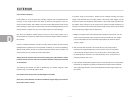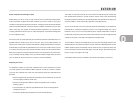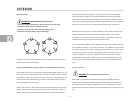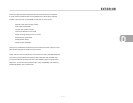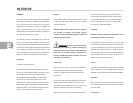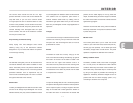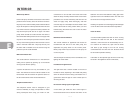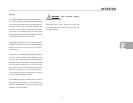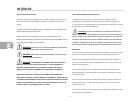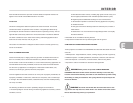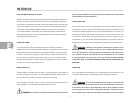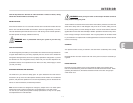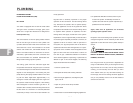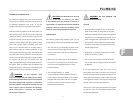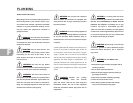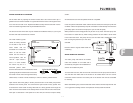
E
INTERIOR
E - 5
CARBON MONOXIDE ALARM
The following information is highlights from the folder provided by the alarm manu-
facturer. The folder, with more detailed information, is contained in your Owners’
Packet.
CAREFULLY READ AND UNDERSTAND THE CONTENTS OF THIS INSTRUCTION
MANUAL BEFORE USING THE ALARM.
STORE THE MANUAL IN A SAFE PLACE FOR FUTURE REFERENCE. PAY
PARTICULAR ATTENTION TO THE SAFETY WARNINGS. PASS THE MANUAL ONTO
ANY SUBSEQUENT USERS OF THE ALARM
WARNING: Activation of your CO alarm’s audible horn indicates the
presence of carbon monoxide (CO) which can KILL YOU.
WARNING: Alarm battery is shipped deactivated. Check your alarm
for proper battery installation.
WARNING: THIS PRODUCT IS INTENDED FOR USE IN ORDINARY
INDOOR LOCATIONS OF FAMILY LIVING UNITS. IT IS NOT DESIGNED TO
MEASURE COMPLIANCE WITH OCCUPATIONAL SAFETY AND HEALTH
ADMINISTRATION (OSHA) COMMERCIAL OR INDUSTRIAL STANDARDS.
INDIVIDUALS WHO ARE AT SPECIAL RISK FROM CARBON MONOXIDE
EXPOSURE BY REASON OF AGE, PREGNANCY OR MEDICAL CONDITION MAY
CONSIDER USING WARNING DEVICES WHICH PROVIDE AUDIBLE AND VISUAL
SIGNALS FOR CARBON MONOXIDE CONCENTRATION UNDER 30 PPM. IF IN
DOUBT CONSULT YOUR MEDICAL PRACTITIONER.
THIS CARBON MONOXIDE ALARM IS NOT
1. Designed to detect smoke, fire or any gas other than carbon monoxide.
2. To be seen as a substitute for the proper servicing of fuel-burning appliances.
3. To be used on an intermittent basis, or as a portable alarm for spillage of combus-
tion products from fuel-burning appliances.
CAUTION: This carbon monoxide alarm is designed for indoor use
only. Do not expose to rain or moisture. Do not knock or drop the alarm. Do not
open or tamper with the alarm as this could cause malfunction. The alarm will
not protect against the risk of carbon monoxide poisoning when the batteries
are dead or missing. The alarm will only indicate the presence of carbon mon-
oxide gas at the sensor. Carbon monoxide gas may be present in other areas.
IMPORTANT
Carbon monoxide is produced by the incomplete combustion of fuels such as wood,
charcoal, coal, heating oil, paraffin, gasoline, natural gas, propane, butane, etc.
Ideally, it is recommended that a carbon monoxide alarm should be installed in or
near every room that has a fuel burning appliance such as any room heaters, water
heaters, cookers, grills, etc.
Ensure that the alarm horn can be heard by all those who are intended to hear it.
Seek medical help if it is suspected that a user of the RV is suffering from carbon
monoxide poisoning.
If the alarm sounds, make sure to investigate the problem. Ignoring the alarm may
result in sickness, injury or death. (CO may be present even if nothing is seen or
smelled by the user).
Room spaces should be well ventilated when household cleaning supplies are used
as these may cause a false alarm.



